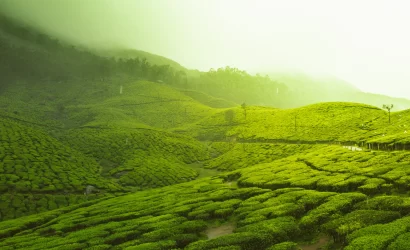History
Nagarjunsagar-Srisailam Wildlife Sanctuary, also known as Rajiv Gandhi Wildlife Sanctuary, is India's largest wildlife sanctuary, covering about 3,568 sq. km across Andhra Pradesh and Telangana. Nestled in the rugged Nallamala Hills and along the Krishna River, it features dry deciduous forests rich in teak, bamboo, and other native flora. The sanctuary is a crucial part of the Nagarjunsagar-Srisailam Tiger Reserve under Project Tiger, providing habitat for Bengal tigers, leopards, sloth bears, sambar deer, and diverse bird species. It also holds cultural significance, housing the ancient Buddhist site of Nagarjunakonda, named after the philosopher Acharya Nagarjuna. The area is dotted with historical temples and caves, offering a blend of nature and heritage. Accessible via Hyderabad and nearby towns like Srisailam and Nagarjuna Sagar, it is best visited between October and March. This sanctuary is vital for wildlife conservation and eco-tourism in southern India.
Flora and Fauna:
Kawal Wildlife Sanctuary is home to diverse flora and fauna. The sanctuary’s vegetation primarily includes dry deciduous forests, with species like teak, bamboo, sal, and tendu. The sanctuary’s fauna includes the Bengal tiger, Indian leopard, wild dog, Indian wolf, and various species of deer such as sambar, spotted deer, and nilgai. It also houses smaller mammals like jackals, hyenas, and wild boars. The birdlife is rich, with species like the Indian eagle-owl, white-eyed buzzard, and various waterfowl. Reptiles such as cobras, pythons, and monitor lizards also thrive in the sanctuary, contributing to its ecological diversity.

Specialities:
ChatGPT said:
Kawal Wildlife Sanctuary is renowned for its rich biodiversity and ecological significance. It is a part of the Kawal Tiger Reserve, making it an important area for tiger conservation. The sanctuary’s varied landscapes, including forests, hills, and rivers, support a wide range of flora and fauna.
Its dense forests are home to endangered species like the Bengal tiger and Indian leopard. Kawal is also a birdwatcher’s paradise, with numerous avian species. The sanctuary’s commitment to wildlife conservation and its role in preserving the region’s natural heritage make it a unique destination for nature lovers and eco-tourism enthusiasts.
Activities:
At Kawal Wildlife Sanctuary, visitors can enjoy a range of activities such as wildlife safaris, where they can spot tigers, leopards, and other animals in their natural habitat. Birdwatching is another popular activity, with numerous species to observe. Nature walks and trekking through the sanctuary’s lush forests allow for immersive exploration. Photography, especially capturing the sanctuary’s diverse landscapes and wildlife, is also popular. Additionally, eco-tourism initiatives offer educational experiences about conservation efforts.
Best time to visit:
The best time to visit Kawal Wildlife Sanctuary is from October to March, during the winter and early spring months. The weather is cool and pleasant, offering optimal conditions for wildlife sightings and outdoor activities. Avoid the monsoon season (June to September) due to heavy rainfall and dense vegetation.
How To Reach:
By Road
-
From Hyderabad: Approximately 300 km via NH 44; around 6 hours by car.
-
From Nagpur: Approximately 280 km; about 5.5 hours by car.
-
From Bangalore: Approximately 800 km; around 14 hours by car.
The sanctuary is well-connected by road, and private vehicles or taxis are commonly used for travel. Tripoto
By Train
-
Nearest Railway Station: Mancherial Railway Station, located approximately 50–110 km from the sanctuary, depending on the entry point. It is well-connected to major cities like Hyderabad and New Delhi.
By Air
-
Nearest Airport: Rajiv Gandhi International Airport, Hyderabad, approximately 300 km away. From the airport, one can hire a taxi or take a bus to reach the sanctuary


